Chiu-Wing Sham
Uncertainty-Aware Deep Co-training for Semi-supervised Medical Image Segmentation
Dec 02, 2021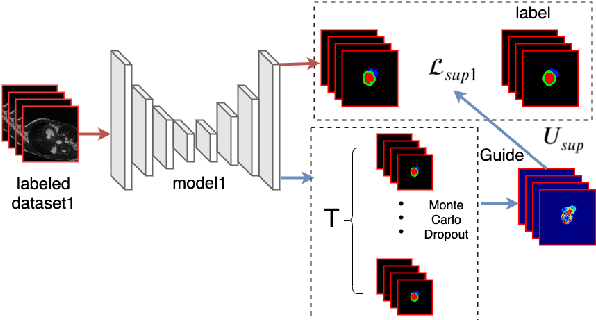
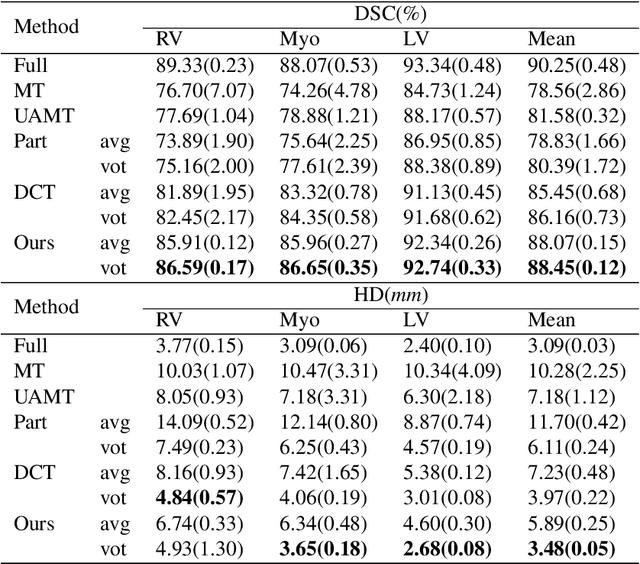
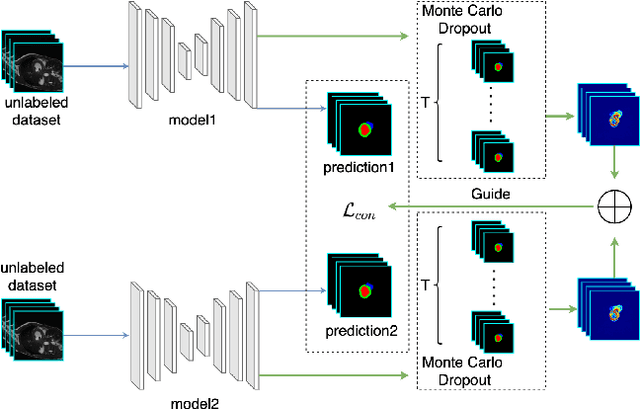
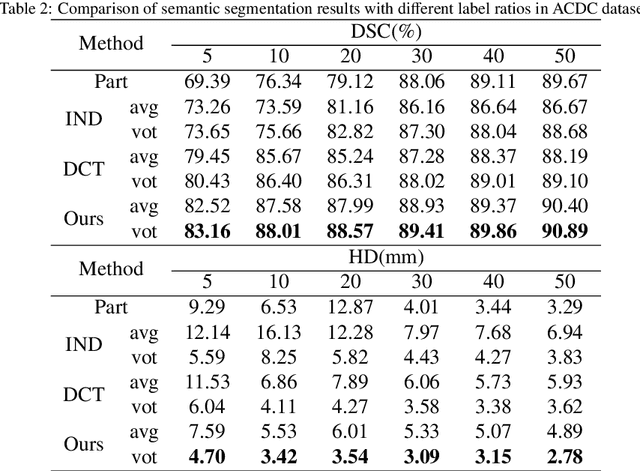
Abstract:Semi-supervised learning has made significant strides in the medical domain since it alleviates the heavy burden of collecting abundant pixel-wise annotated data for semantic segmentation tasks. Existing semi-supervised approaches enhance the ability to extract features from unlabeled data with prior knowledge obtained from limited labeled data. However, due to the scarcity of labeled data, the features extracted by the models are limited in supervised learning, and the quality of predictions for unlabeled data also cannot be guaranteed. Both will impede consistency training. To this end, we proposed a novel uncertainty-aware scheme to make models learn regions purposefully. Specifically, we employ Monte Carlo Sampling as an estimation method to attain an uncertainty map, which can serve as a weight for losses to force the models to focus on the valuable region according to the characteristics of supervised learning and unsupervised learning. Simultaneously, in the backward process, we joint unsupervised and supervised losses to accelerate the convergence of the network via enhancing the gradient flow between different tasks. Quantitatively, we conduct extensive experiments on three challenging medical datasets. Experimental results show desirable improvements to state-of-the-art counterparts.
An Embedded Iris Recognition System Optimization using Dynamically ReconfigurableDecoder with LDPC Codes
Jul 08, 2021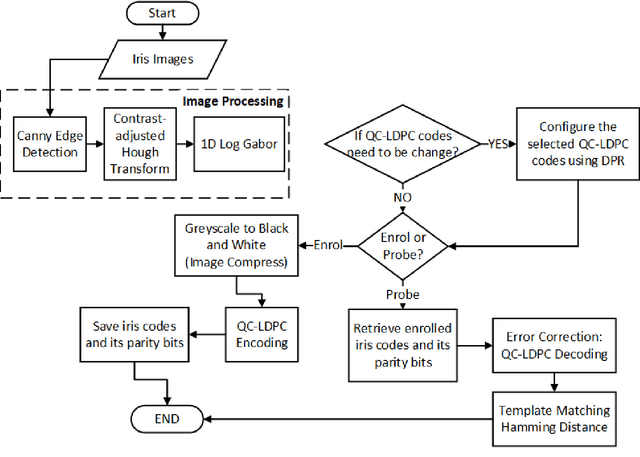
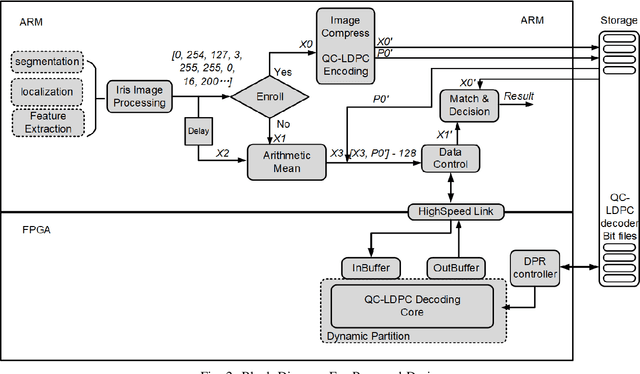
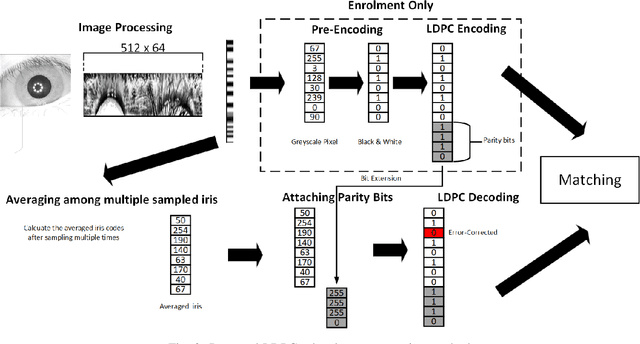
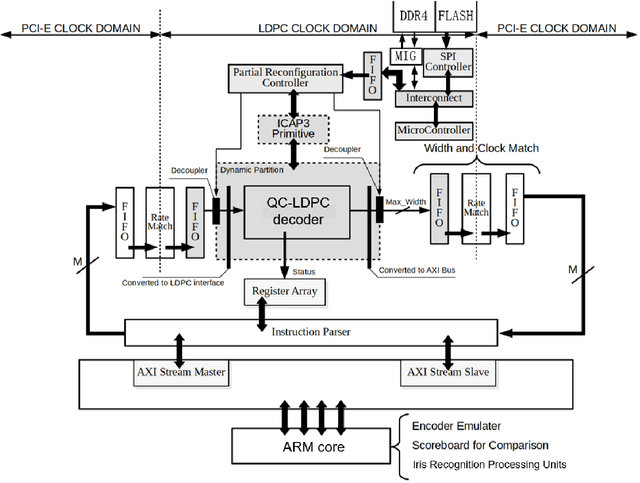
Abstract:Extracting and analyzing iris textures for biometric recognition has been extensively studied. As the transition of iris recognition from lab technology to nation-scale applications, most systems are facing high complexity in either time or space, leading to unfitness for embedded devices. In this paper, the proposed design includes a minimal set of computer vision modules and multi-mode QC-LDPC decoder which can alleviate variability and noise caused by iris acquisition and follow-up process. Several classes of QC-LDPC code from IEEE 802.16 are tested for the validity of accuracy improvement. Some of the codes mentioned above are used for further QC-LDPC decoder quantization, validation and comparison to each other. We show that we can apply Dynamic Partial Reconfiguration technology to implement the multi-mode QC-LDPC decoder for the iris recognition system. The results show that the implementation is power-efficient and good for edge applications.
A More Compact Object Detector Head Network with Feature Enhancement and Relational Reasoning
Jul 03, 2021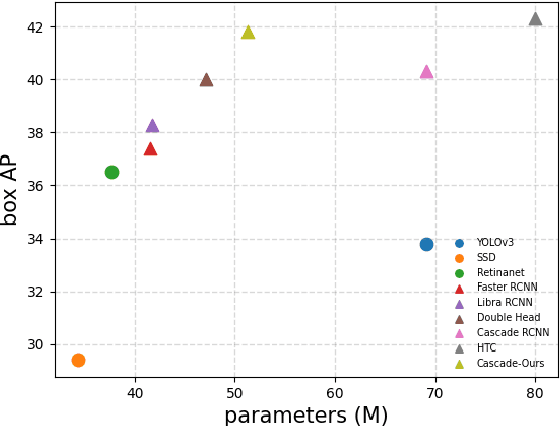

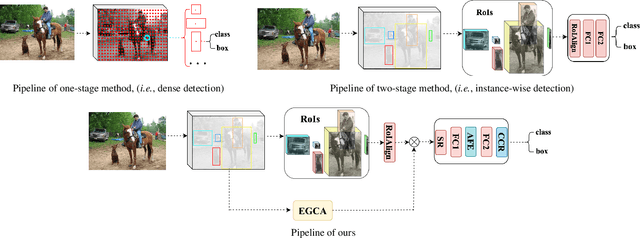
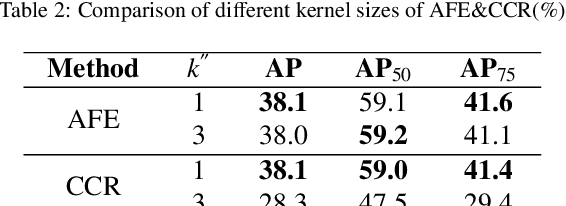
Abstract:Modeling implicit feature interaction patterns is of significant importance to object detection tasks. However, in the two-stage detectors, due to the excessive use of hand-crafted components, it is very difficult to reason about the implicit relationship of the instance features. To tackle this problem, we analyze three different levels of feature interaction relationships, namely, the dependency relationship between the cropped local features and global features, the feature autocorrelation within the instance, and the cross-correlation relationship between the instances. To this end, we propose a more compact object detector head network (CODH), which can not only preserve global context information and condense the information density, but also allows instance-wise feature enhancement and relational reasoning in a larger matrix space. Without bells and whistles, our method can effectively improve the detection performance while significantly reducing the parameters of the model, e.g., with our method, the parameters of the head network is 0.6 times smaller than the state-of-the-art Cascade R-CNN, yet the performance boost is 1.3% on COCO test-dev. Without losing generality, we can also build a more lighter head network for other multi-stage detectors by assembling our method.
 Add to Chrome
Add to Chrome Add to Firefox
Add to Firefox Add to Edge
Add to Edge